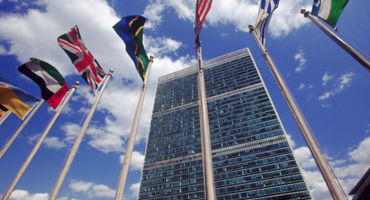Global equities (+7.2%) rose in the first quarter. Economic growth, consumer spending, and labor markets were surprisingly resilient against a backdrop of seismic changes in the global economy, including sweeping sanctions against Russia, a reshaping of global energy flows, and a banking crisis that rekindled fears of a global recession. Global central banks coordinated efforts to boost liquidity in the financial system after the collapse of two US regional banks and Credit Suisse rattled financial markets and exposed vulnerabilities in the banking industry. Decisive action by regulators eased liquidity fears, but the tumult increased the likelihood of more stringent financing conditions in the near term as banks strengthen their lending standards and bolster their liquidity. Major central banks, including the US Federal Reserve (Fed) and the European Central Bank (ECB), continued to raise interest rates in March, but financial stresses and persistent inflation muddied the outlook for interest rates. Chinese equities surged after the country’s zero-COVID restrictions were rapidly unwound and the government embraced pro-growth policy measures. Markets were increasingly optimistic about the pace of China’s economic recovery, which could benefit its trading partners and boost the global economy. Thanks to record-high temperatures and efforts to find alternative sources of natural gas, wholesale gas prices in Europe have fallen precipitously to levels last seen before the Russia/Ukraine war, easing pressure on consumers and businesses and reducing the potential for a deep recession in the region.
Global fixed income sectors generated positive returns during the first quarter, benefiting from a plunge in most developed market (DM) sovereign yields in response to stresses in the banking sector. Markets repriced expectations for policy rates, forecasting a more dovish approach to maintain systemic financial stability. Most credit sectors generated positive excess returns as regulators took steps to boost liquidity and provide reassurances about the health of the banking system; however, securitized sectors underperformed driven by concerns about forced sales of banks’ securities holdings (agency mortgages) and the impact of bank stress on the commercial real estate market. The US dollar weakened against most currencies. Global fixed income sectors recouped a portion of their losses from earlier in the year as most developed market (DM) sovereign yields stabilized at higher levels and spreads generally tightened. Despite persistent hawkish rhetoric from most DM central banks, below-consensus inflation offered hope that most economies may have already experienced peak inflation. Most spread sectors generated positive excess returns, supported by recovering political stability in the UK, reopening in China, and light issuance. The US dollar weakened versus most currencies.
Commodities (-4.9%) were driven lower by energy, as prices were stifled by concerns about a potential US recession, robust Russian oil flows despite sanctions, and banking turmoil.
Equities
United States
US equities (+7.5%) surged higher in the first quarter. The sudden collapse of two US regional banks prompted swift policy actions by federal regulators, which helped stabilize liquidity and stem the potential for broader contagion. The tumult generated more uncertainty about the US economic outlook, as investors grappled to assess the impact of tightening credit conditions and the path of interest rates and inflation. Shares of large technology companies surged, helping growth stocks significantly outperform their value counterparts. A modest decline in consumer price growth during the quarter and a sharp drop in the Producer Price Index in March offered greater assurances that price pressures are easing. However, prices remained highly elevated, and the Fed’s task of curbing inflation was further complicated by a robust job market, resilient consumer spending, and upheaval in the banking industry. The Fed slowed its pace of policy tightening, raising interest rates by 25 basis points (bps) in February and March, to a range between 4.75% – 5%. The median forecast of members of the Federal Open Market Committee revealed that interest rates are anticipated to peak at 5.1% in 2023. Fed Chair Jerome Powell pushed back on views of rate cuts in 2023, although fed funds futures indicated that markets expect the Fed to lower rates by the end of the year. US GDP grew at a 2.6% annual pace in the fourth quarter of 2022, while corporate earnings for the same period lagged expectations, as profit margins were squeezed by elevated input costs and weaker demand.
Economic data released during the quarter signaled that the US economy remained on a solid footing. The labor market was particularly robust; jobless claims and unemployment remained near historic lows, and nonfarm payroll growth vastly exceeded expectations. However, signs of softening labor market conditions emerged in March, as an aggregate measure of weekly payrolls — showing broader changes in earnings, hours worked, and employment — grew at the slowest pace in two years. Despite high inflation and rising interest rates, consumer spending was surprisingly resilient, prompting many economists to boost their economic growth forecasts for the first quarter. In February, retail sales slowed by only 0.4% after exceptionally robust growth of 3.2% in January, while consumer spending advanced at a modest 0.2% pace following January’s outsized gain of 2.0%. The Conference Board’s Consumer Confidence Index ebbed lower in the first quarter, although a surprising rebound in March suggested that turmoil in the banking industry failed to dent consumers’ economic outlook. After a tumultuous year, the housing market showed signs of stabilizing despite affordability concerns, sharply higher mortgage rates, and limited housing inventory. Expansion in the services sector contrasted with a contraction in the manufacturing sector, reflecting an ongoing shift in consumers’ preference for services over goods. Small-business sentiment marginally improved over the quarter but remained well below pre-pandemic levels.
Within the S&P 500 Index (+7.5%), seven of the 11 sectors posted positive results for the quarter. Information technology (+24.1%) was the top-performing sector, led by semiconductors & semiconductor equipment (+36.3%) and software (+20.7%) groups. Communication services (+20.5%) outperformed, most notably interactive media & services (+29.6%). Consumer discretionary (+16.8%) also outperformed, with automobiles (+56.0%) and broadline retail (+21.9%) groups contributing the most. Energy (-4.7%) was the bottom-performing sector as the price of oil declined. Health care (-4.3%) also underperformed, most notably health care providers & services (-11.0%) and pharmaceuticals (-8.3%).
Europe
European equities (+8.8%) surged higher. Despite high inflation and rapidly rising interest rates, the region’s economy proved more resilient than previously feared. Turbulence in Europe’s banking sector stabilized at the end of the quarter following an orchestrated takeover of Credit Suisse and reassurances by European leaders and policymakers that the region’s banks are stable. Europe’s central banks continued to raise interest rates during the quarter. The ECB lifted rates by 50 bps in February and March, indicating that it will take a data-dependent approach to future policy decisions due to elevated uncertainties about inflation, economic growth, and the impact of tighter credit conditions and higher interest rates on demand. Eurozone headline inflation eased during the quarter, thanks to lower energy prices. However, core inflation remained stubbornly high due to persistent price pressures in the services sector; the eurozone core consumer price index (CPI) rose to a record high of 5.7% year over year in March, up from 5.2% in December. Eurozone composite PMI exceeded expectations in March, and labor costs accelerated to 5.7% in the fourth quarter, adding further impetus for the ECB to pursue a more restrictive policy. European economies benefited from lower natural gas prices, which tumbled to their lowest level since September 2021 amid ample storage, mild weather, and lower demand. The European Commission published a proposal to reform Europe’s electricity market, including measures to prevent severe price spikes and accelerate the use of renewables.
A trend of improving macroeconomic data suggested that Europe’s economy is weathering the stress of high inflation and interest rates, although Europe’s manufacturing sector remained in contractionary territory. The eurozone Manufacturing Purchasing Managers’ Index (PMI) weakened to 47.3 in March as demand continued to decline. Encouragingly, input costs in March fell for the first time in three years, and sales prices rose at a slower pace. Contraction in manufacturing contrasted with robust activity in the services sector, which rapidly expanded over the quarter. The eurozone Composite PMI for March showed that eurozone business activity accelerated to a 10-month high, driven entirely by services, which registered its strongest expansion since last May. Although the overall rate of activity growth was modest, the result helped to reinforce views that the region’s economy has stabilized. In March, eurozone consumer confidence held firm near its highest level in more than a year, but industry confidence lost momentum amid lower production expectations.
In Germany (+12.8%), the Ifo Business Climate Index meaningfully improved over the quarter, indicating that German business morale continued to brighten. In March, the ZEW Indicator of Economic Sentiment snapped a five-month streak of gains, as sentiment tumbled amid worries that bank lending will become more restrictive. In the UK (+3.2%), better-than-anticipated public finances allowed Chancellor Jeremy Hunt to unveil a more growth-oriented budget, but his plans to bolster business investment and the labor force face constraints from a tough fiscal backdrop and high inflation. The composite PMI remained in expansionary territory, offering hope that recession can be avoided in the near term. The UK and European Union agreed to a new deal on post-Brexit trading arrangements for Northern Ireland. In France (+12.7%), the government narrowly survived a no-confidence vote after its controversial pension reform bill sparked widespread protests.
Pacific Basin
Pacific Basin equities (+5.7%) ended the quarter higher. Australia’s (+4.1%) economy faced headwinds from rising interest rates, cost-of-living pressures, and weak consumer and business confidence. A greater-than-expected deceleration in inflation strengthened the case for the Reserve Bank of Australia (RBA) to pause rate hikes, with the core CPI in February cooling for the second consecutive month to an eight-month low of 6.9%. The RBA lifted interest rates by 25 bps, to 3.6%, and its dovish policy statement suggested that the rate-hiking cycle could be nearing an end. Consumer confidence was stuck at a historically low level during the quarter, with intentions to purchase big-ticket items notably weak in March. Retail sales growth slowed to 0.2% in February, further evidence that high interest rates and inflation are weighing on consumers. However, the labor market remained very tight despite aggressive policy tightening. Employment growth in February rebounded above expectations after two straight monthly declines, as the number of jobs increased by 64,600, driving the unemployment rate down to 3.5%.
Japan (+7.3%) narrowly avoided recession after annualized GDP growth in the fourth quarter was revised down to 0.1% amid weak consumer spending. The result was significantly below forecasts, underscoring the fragility of the economic recovery. After accelerating to a four-decade high of 4.2% in January, inflation in February slowed for the first time in more than a year, as the core CPI decelerated sharply to 3.1% year over year. However, government energy subsidies masked a stronger underlying trend of rising prices, adding pressure on the Bank of Japan (BOJ) to tweak its yield curve control policy. The BOJ bought record amounts of bonds to defend its yield cap against speculators who believe that the bank soon will phase out its massive monetary stimulus program. After accounting for inflation, Japanese real wages declined 4.1% year over year in January, the largest drop since 2014. Prime Minister Fumio Kishida pushed for wage hikes that exceed inflation, and incoming BOJ President Kazuo Ueda stressed that stronger wage growth must accompany price hikes for inflation to sustainably meet the bank’s 2% target. The country’s largest employers agreed to raise remuneration by the most in a quarter of a century during spring negotiations in March, although the wage outlook for workers at smaller companies (70% of Japan’s workforce) appeared less optimistic, as companies struggle to pass on higher prices to consumers.
New Zealand’s (+9.4%) trade deficit widened, and the economy contracted more than expected in the fourth quarter, putting the country on the brink of recession and prompting markets to anticipate a slower pace of interest-rate hikes in April. In Singapore (+6.3%), the Ministry of Trade and Finance maintained its GDP growth forecast of 0.5% – 2.5% for 2023 despite slowing manufacturing output, which fell 8.9% year over year in February amid weak demand in several key markets, notably the US and Europe. Hong Kong’s (-1.9%) fourth-quarter GDP declined more than anticipated, although the outlook for 2023 brightened amid China’s anticipated economic recovery and a strong rebound in tourism.
Emerging Markets
Emerging markets (EM) equities (+3.8%) ended higher in a volatile quarter, buoyed by cooling inflation and China’s reopening. Within EM, Asia outperformed Europe, the Middle East, and Africa (EMEA) and Latin America.
Asian equities (+5.0%) registered good gains. China’s (+5.1%) rapid shift away from stringent COVID measures and a pro-growth policy stance fueled a powerful rally in equities, which attracted record inflows in January. Economic data released in the period indicated that the economy gained momentum at a faster-than-expected pace. Services-sector activity soared in January amid a seasonal spending splurge for the Lunar New Year holiday, while the manufacturing PMI surged into expansionary territory. In March, the services sector expanded at the fastest pace in more than a decade, but a dip in the manufacturing PMI signaled an uneven economic recovery. The real estate sector showed signs of stabilizing, with prices rising and home sales sharply rebounding. The People’s Bank of China (PBOC) cut the required reserve ratio by 25 bps in March to support lending. Taiwan (+13.7%) and South Korea (+12.9%) were buoyed by China’s accelerating recovery despite increased geopolitical tensions in the region. The Bank of Korea left interest rates unchanged, snapping a streak of seven consecutive rate hikes, amid mounting concerns about the health of the economy. In India (-6.9%), the government unveiled a business-friendly budget, pledging to cut taxes and raise capital spending by a third, to US$122 billion, to boost infrastructure and promote job creation.
In EMEA (+0.1%), South African (+3.9%) President Cyril Ramaphosa declared a national state of disaster in an effort to secure government funds to alleviate the escalating energy crisis. The increasing frequency of rolling blackouts prompted warnings from the International Monetary Fund that GDP growth in 2023 could be cut in half, to only 1.2%. S&P Global Ratings downgraded the country’s outlook to stable from positive, citing greater pressure on economic growth from severe electricity shortages and the slow pace of government reforms. Czechia (+33.0%) surged as markets anticipated no further policy tightening and potential rate cuts later in 2023. The central bank left interest rates unchanged, indicating that a strong currency is helping to contain high inflation. In Poland (-2.8%), Prime Minister Mateusz Morawiecki helped drive forward European negotiations to supply tanks and additional military defense assistance to Ukraine.
Latin American equities (-1.2%) declined. Brazil (-6.9%) fell sharply after President Luiz Inácio Lula da Silva rattled markets after he criticized the central bank’s president and questioned whether the bank should remain independent. Despite President Lula’s intense pressure to lower borrowing costs, the bank held interest rates steady at 13.75% due to higher inflation expectations. Brazil’s economy stagnated in the fourth quarter amid shrinking industrial output and moderating services activity, underscoring the economic challenges that Lula faces in his efforts to boost living standards and reduce poverty. Mexico (+11.6%) benefited from the prospect of closer economic ties with Canada and the US, stronger-than-expected GDP growth in the fourth quarter, and below-forecast core inflation. Colombia (-16.5%) plunged, with President Gustavo Petro calling on citizens to rise up against the “elites” as he looks to garner support for plans to expand the government’s role in pensions, health care, and the labor market.
Fixed Income
Global growth weakened across most DM economies during the fourth quarter as the lagged impact of tighter monetary policies started to take effect. Inflation remained well above central bank targets, supported by tight labor markets. US payroll growth remained firm, although the unemployment rate ticked up as more workers entered the labor force. Inflation in the UK was near the highest among DM economies even as house prices declined further. The services PMI expanded in the eurozone, boosted by real estate activity, while the manufacturing PMI contracted for the ninth consecutive month. Japanese retail sales rose more than expected, led by clothing and cars; inflation excluding fresh food and energy increased by the most in more than four decades. China’s recovery gained steam as both manufacturing and services PMIs expanded by more than forecast.
Volatility spiked, particularly during March, after the collapse of Silicon Valley Bank led to fears about broader contagion across the banking system. Swiss authorities stepped in with a negotiated Credit Suisse-UBS deal to restore confidence. Policymakers responded promptly to the banking crisis, and there was a surge in borrowing at the Fed’s emergency discount window and US-dollar swap line facility. Emphasizing a separation in their financial stability and monetary policy tool kit, major central banks delivered hikes in line with consensus despite concerns over the impact on the banking industry. Most major bond yields declined as a result of a flight to safety and a dovish repricing of the fed funds rate. US rates ended lower as markets priced in Fed rate cuts in 2023 even as inflation remained above target and economic activity appeared resilient. Most eurozone and UK rates declined. The RBA hiked rates, but longer-term yields declined as dovish signals revealed that policymakers were ready to consider a pause in the tightening cycle. Meanwhile, the BOJ stayed stuck with its ultra-easy monetary policy at Haruhiko Kuroda’s last meeting as the bank’s governor. Chinese yields were relatively stable during the quarter. The PBOC reduced the required reserve ratio to loosen interbank funding conditions.
Currencies
The US dollar ended mixed. In DMs, European currencies (euro, Swiss franc, British pound) gained while higher-beta commodity-linked currencies (Norwegian krone, Australian dollar, New Zealand dollar) declined. The Swiss franc rallied late in the quarter after the Swiss National Bank bolstered the franc by selling foreign currency-denominated reserves to ward off imported inflationary pressures. The Norwegian krone declined in line with oil prices, which ended lower as banking-sector turmoil outweighed supply disruptions and positive news on China’s economic recovery. The US government signaled that refilling the Strategic Petroleum Reserve would take longer than previously expected, slowing the subsequent recovery in oil prices. Most EM currencies ended higher, benefiting from elevated interest rates after central banks in Colombia, Mexico, South Africa, and Thailand hiked rates to counter inflation. Latin American currencies (Mexican peso, Colombian peso) were the top gainers, while select higher-beta currencies (South African rand, Turkish lira) underperformed.
Commodities
Energy (-8.6%) fell sharply during the quarter. Gasoline (+1.8%) rose amid strong US demand and a more favorable demand outlook in China. However, crude oil (-5.2%) ended lower, with recession fears prompting investors to cut bullish positions in US crude by the most in more than a decade. Gas oil (-10.7%) and heating oil (-14.2%) fell sharply during the period as market sentiment diminished amid a surge in Russian exports to Asia and concerns about the global economy. US natural gas (-49.8%) plummeted as above-normal temperatures hurt demand and drove inventory levels higher.
Industrial metals (+0.7%) were led higher by copper (+8.5%), which benefited from persistent worries around the global supply outlook and prospects for a demand recovery in China (the largest consumer). Aluminum (+0.9%) also gained on expectations of a rebound in China’s economy, and zinc (-0.2%) slipped following hawkish signals from the US Fed in addition to some signs of weak near-term Chinese demand. Lead (-8.2%) fell as inventories at London Metal Exchange warehouses sank to their lowest levels since 1990, while nickel (-20.5%) plummeted amid ongoing liquidity challenges, the potential for weak near-term demand in China, and uncertainties about the global economic outlook.
Precious metals (+7.4%) was the best-performing group, as gold (+8.1%) and silver (+0.8%) were bolstered by banking-industry turmoil and concerns that the US economy may tip into recession. Additionally, reduced expectations for more rate hikes by the Fed were supportive, as weaker interest rates are typically positive for non-interest-yielding bullion.
Agriculture & livestock (-0.9%) moved modestly lower. Sugar (+20.3%) surged on fears of tighter global supplies; India — the world’s second-largest exporter — cut exports after rains hurt cane crops, and the country also diverted more sugar toward the production of biofuel. Cocoa (+12.5%) was bolstered by reports that exporters in the world’s top-producing nation, Côte d’Ivoire, were close to defaulting on their contracts due to a lack of beans from the main harvest. Feeder cattle (+6.0%) and live cattle (+5.0%) moved higher after the annual cattle inventory report highlighted the lowest beef cow numbers since 1962 and the lowest total cattle herd in eight years. Coffee (+3.1%) prices advanced as fears about tight global supplies underpinned prices early in the quarter. Soybeans (+0.4%) finished marginally higher after the US Department of Agriculture cut its estimate for domestic stockpiles to the lowest level in seven seasons. Cotton (-0.1%) was constrained by slowing global demand. Corn (-1.2%) slipped lower as reports of a good Brazilian crop bolstered the supply outlook and pressured prices. Wheat (-8.2%) was driven down by robust Russian exports, shipments out of Ukraine through a safe corridor, and improved prospects for US crops. Lean hogs (-19.6%) fell sharply during the first quarter, as plentiful supplies and weak export demand weighed on prices.
















Chart in Focus: Can this equity bull market last?
Continue readingMultiple authors